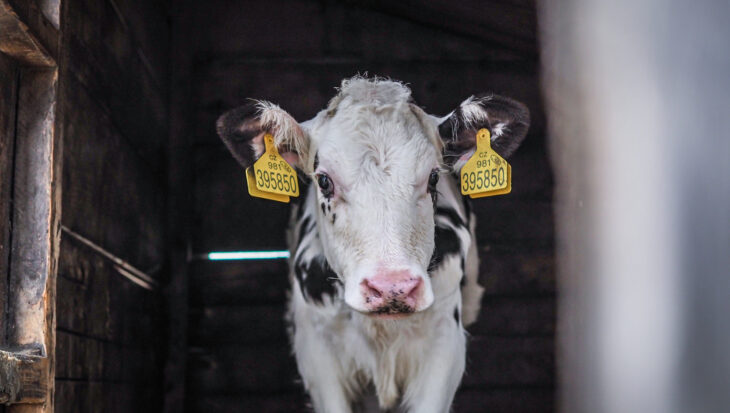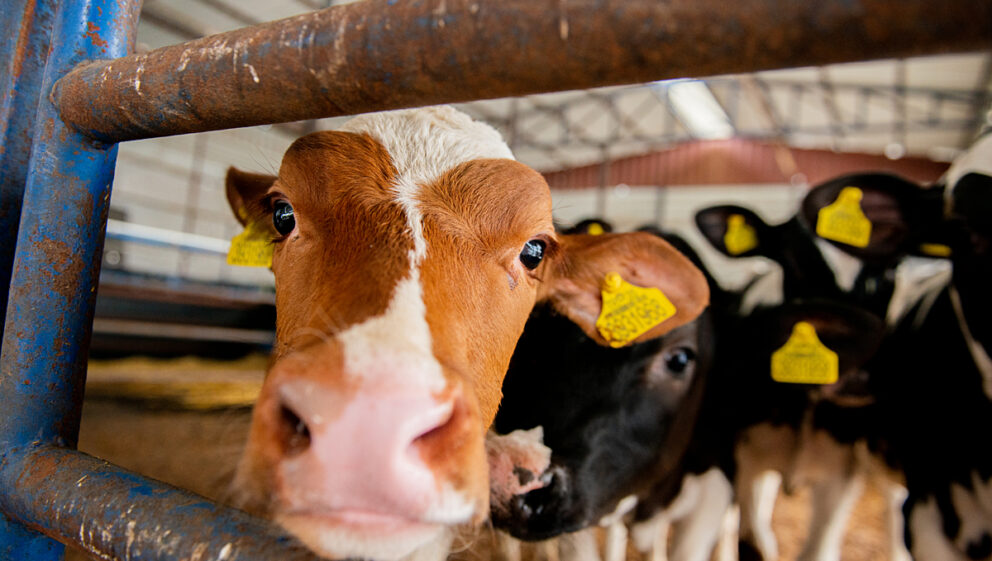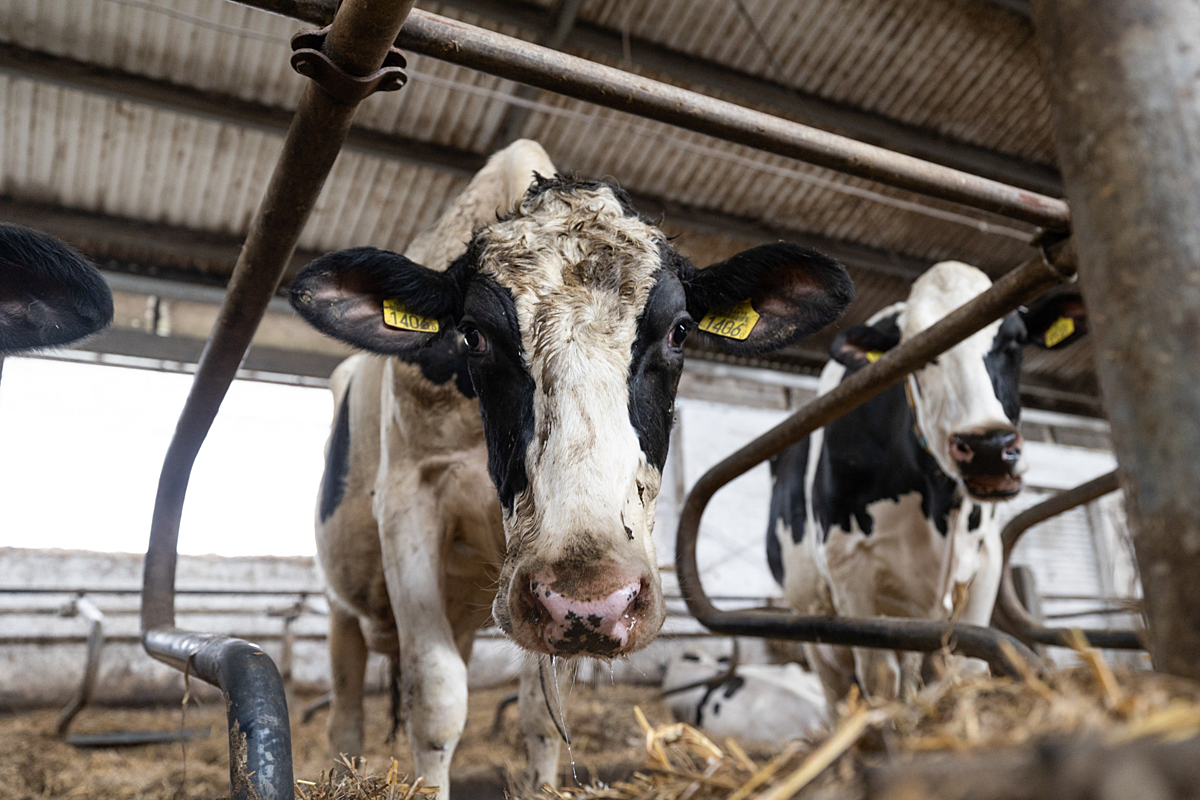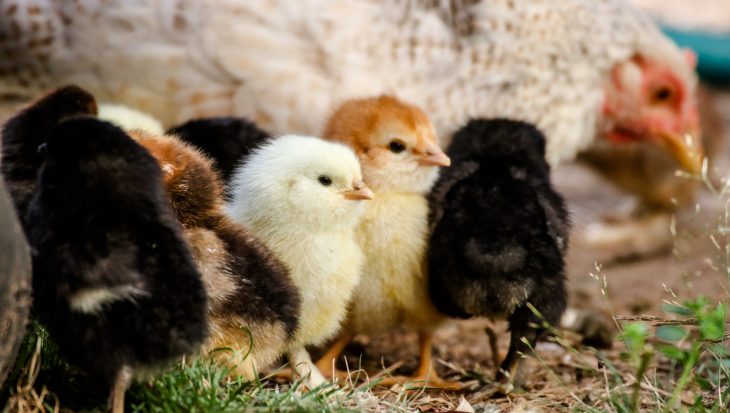The dairy industry works hard to maintain a facade of happy cows grazing in fields and trotting eagerly to the milking parlour. But the truth is quite different...
The dairy industry destroys family bonds
Many people are unaware of the fundamentals of dairy farming: that a cow must give birth to a calf in order to produce milk, and that her calf ‘must’ be removed so that the mother’s milk can be taken for humans to use instead of feeding her calf. This separation occurs mere hours after birth and causes acute stress for both mother and baby: the pair will cry for each other, sometimes for hours, and mothers have been known to walk for miles in search of their calf.
If allowed, calves would suckle for up to a year and many would live with their mothers for life. Instead, modern dairy cows (1.8 million in the UK alone) endure this near-constant cycle of pregnancy, birth and grief every single year, until they are no longer ‘profitable’.
Buying dairy funds the beef industry
It is commonly believed that dairy is less cruel than beef production because the cows don’t die to produce milk in the same way they do for meat. But many people don’t realise that half of all animals killed for beef come from the dairy industry: buying dairy quite literally props up the beef industry, and vice versa. Figures show that around 280,000 dairy calves (typically males who are ‘useless’ because they cannot produce milk) entered the beef supply chain between 2016-2018 – all so that farmers can sell their mothers’ milk.
The grass is not always green at all
Increasingly, dairy cows are being kept in ‘zero grazing systems’ where individuals are housed indoors all year round. These can be dark, dank places where hundreds of cows are confined to sheds filled with individual cubicles and where these gentle girls are denied all opportunity to express natural behaviours like playing, grazing and exploring. Aside from twice-daily trips to the automated milking unit, hundreds of thousands of cows will spend their entire lives in these sheds – the cow equivalent of battery cages for hens. Regulators don’t currently report on intensive units, but it’s thought that as many as 20% of UK dairy cows are kept in these systems and will never feel the grass beneath their hooves.
Milked to death
The health of a dairy cow is pushed well beyond her limits. She’ll be forced to nurture an unborn calf and give birth while still lactating from a previous pregnancy. This is why many dairy herds have a skeletal appearance with protruding hips and spines because their bodies are relying on energy reserves just to keep them alive. Conditions like ‘milk fever’ and lameness affect nearly all UK dairy herds – in fact, around half of all cows suffer from the infamous infection of the udder known as ‘mastitis’.
A cow’s natural lifespan is around 20 years but on modern dairy farms she’ll be physically exhausted, lame and infertile by just 4-5 years of age. No longer able to produce the quantity of milk demanded of her, she will be sent to slaughter and turned into cheap meat products like pies and dog food.
The dairy industry is one of the most exploitative methods of farming animals. Already forced to endure an endless cycle of pregnancy and milk production, dairy cows are having their rights further restricted with year-round housing. No animal should be forced to endure such a miserable life to produce something which we do not need. The only sustainable, compassionate choice is to adopt a dairy-free diet.




